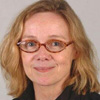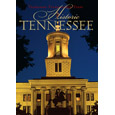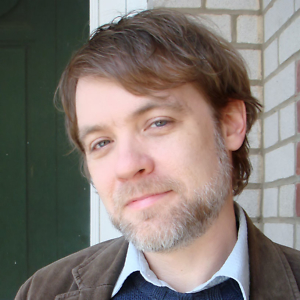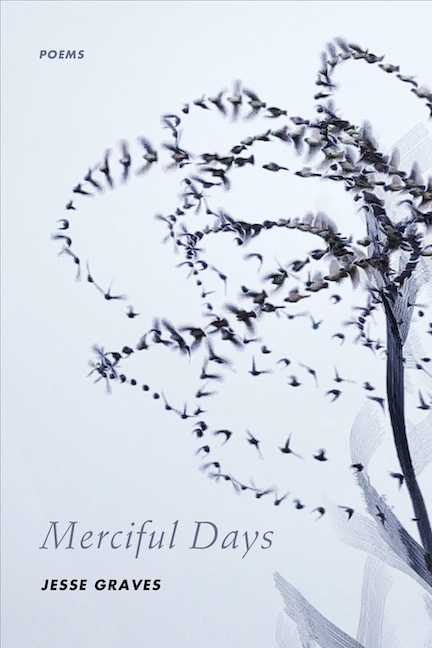Memphis Reads
Markus Zusak talks with Chapter 16 about his YA classic, The Book Thief
When Australian writer Markus Zusak wrote his beloved 2006 novel, The Book Thief, dozens of years and thousands of miles separated him from Nazi Germany, where his story is set. But, he says, “the world of this book was somehow always in me.”
 The 2017 Memphis Reads selection, The Book Thief has found its way into the affections of an untold number of readers as well. It is number three on Time Magazine’s “100 Best Young Adult Books of All Time,” right after the Harry Potter series, and it was among the top ten on NPR’s list of 100 “Best-Ever Teen Novels.” As the cover of the tenth-anniversary edition boasts, it has been translated into forty languages and sold more than ten million copies.
The 2017 Memphis Reads selection, The Book Thief has found its way into the affections of an untold number of readers as well. It is number three on Time Magazine’s “100 Best Young Adult Books of All Time,” right after the Harry Potter series, and it was among the top ten on NPR’s list of 100 “Best-Ever Teen Novels.” As the cover of the tenth-anniversary edition boasts, it has been translated into forty languages and sold more than ten million copies.
The story begins in 1939 in an impoverished neighborhood near Munich where Liesel Meminger—who is nine years old, starving, and illiterate—is delivered to a foster home by her mother shortly after she has witnessed the death of her six-year-old brother. The first book Liesel steals is a manual for gravediggers she finds after her brother’s burial. She furtively takes another book from a Nazi Party bonfire, and others follow. The thefts are not the only secret she’s keeping: her family is also hiding a young Jewish fugitive named Max in their basement.
Zusak’s other books include I Am the Messenger and a trilogy about brothers: The Underdog, Fighting Ruben Wolfe, and Getting the Girl. Prior to two public appearances in Memphis in connection with the Memphis Reads program, he answered questions from Chapter 16 via email:
Chapter 16: The narrator of The Book Thief is Death, who is exhausted and exasperated by humans, but also compassionate and sad about some of the souls he collects. How did you settle on Death as the logical character to tell the story of your resilient title character, Liesel Meminger?
Markus Zusak: Ideas are always a combination of imagining, perseverance, and pure dumb luck. In the case of using Death as narrator in The Book Thief, I worked with some kids in a school, writing on the idea of colors, and in my story, I used Death as narrator. I thought, “Maybe I should use that in the book I’m setting in Nazi Germany.” I didn’t think of its logic, but I quickly realized it made sense. Who better to be hanging around in a time of war? We often say that war and death are best friends, so it felt like the right fit.
The trickier part, of course, was getting it to work. At first Death was too macabre—he was enjoying his work too much—until I wondered if maybe he should be afraid of humans, and afraid for us. He would tell the story of Liesel Meminger to prove to himself that humans can be beautiful, selfless, and worthwhile.
Chapter 16: Liesel’s books define chapters of her life in Nazi Germany, when she is nine to fourteen years old. What were the great books in your life when you were that age?
Zusak: I think because my parents couldn’t speak English when they came to Australia, language was always important to them, and, because of that, so were books. We had a lot of books in our house, and what I remember best is having what seemed like every Dr. Seuss book published. When I was fourteen, S.E. Hinton’s The Outsiders was a school text, and like so many teenagers, I loved that book. It was another of Hinton’s books, though, Taming the Star Runner, which made me want to write. (The protagonist was a fifteen-year-old about to have a book published.)
Other than that, I remember having teachers who read to us in primary school; I recall a book called The Mystical Beast in particular—but I also know that as soon as this interview is over, I’ll remember a whole list of other titles that had an even greater impact on me.
 Chapter 16: Midway through the book, we learn that an endearing key character will die in the end, and how it will happen. “Mystery bores me,” Death explains about giving away the ending. How much does the narrator’s point of view resemble yours?
Chapter 16: Midway through the book, we learn that an endearing key character will die in the end, and how it will happen. “Mystery bores me,” Death explains about giving away the ending. How much does the narrator’s point of view resemble yours?
Zusak: These are good questions! The “mystery bores me” line is even more indicative of my own outlook in the context of the next line, which is, “It chores me.” I don’t really feel that way, but I’m more interested in the absurd combinations of words themselves than in anything else. I love that a plot can have twists and turns, but so can language itself. I like that words can have their own shape and feel, if that makes any sense at all.
In the end, I don’t mind giving an element of the plot away if there’s a good reason. In the case of the character you’re talking about, I did it for at least four reasons. Firstly, it was an instinct to slap the reader at that particular moment. Secondly, I wanted Death to tell a story the way we do but also just left or right of it (and giving things away was part of that). Thirdly, everything the character does from that moment hopefully takes on more gravity and has more meaning. And lastly, I was also hoping it might even soften the blow later, when we really see his death happen—although I was a complete mess while I was writing it.
Chapter 16: You’ve written that your parents’ stories of growing up in Germany and Austria during World War II inspired this book. The impoverished people who live on Himmel Street in the fictional town near Munich, where the novel is set, are harassed by, and sometimes defy, the Nazi Party. What are some of the specific anecdotes from your parents’ experience that are embedded in the novel?
Zusak: I could start with my dad, who told stories of refusing to go to the Hitler Youth when he was a boy, and whose parents didn’t allow him to go to a special Nazi school. His father was punished for that and sent to serve in World War II, diffusing land mines and putting out crumbling, burning buildings. This was after he had served in the first World War as well. In my mother’s case, her father refused to fly the Nazi flag on important days like Hitler’s birthday. She was witness to teenagers giving bread to Jewish people being taken to Dachau (and both the Jewish people and the kids were whipped by German soldiers—for taking the bread on one hand, and giving it on the other. They said that they were children and they were the lucky ones. So many people, including children, died.
Chapter 16: Beyond insights provided by your parents, what kind of research did you do to get the details of life in a struggling German neighborhood as World War II expanded on the continent?
Markus Zusak: A lot of reading—but maybe not as much as you might think—because the world of this book was somehow always in me. It was like I just scratched something open in my mind, and reached in and pulled it out. But I read many histories of the time; I found the Australian War Memorial in our capital, Canberra, of great use when it came to facts and statistics of air raids. Interestingly enough, I only went to Munich after I’d finished the manuscript, to check my facts and research. That was when I even looked into the seasonal habits of apple trees in that region –to make sure that when Liesel and her friends steal apples from the farms, they would be the right apples, in the right region, at the right time of year.
Chapter 16: There are a couple of books within this book, and they are produced with drawings. One of them is created over a copy of Mein Kampf, with the Hitler text faintly visible underneath. How did you and your illustrator, Trudy White, negotiate to combine the words and pictures?
Zusak: There was no negotiation. Trudy and I are great friends, and I gave her a bit of an idea of what I wanted. I already knew she did exactly the sort of work I was looking for. I had always wanted the words of Mein Kampf to bleed through, but I didn’t tell her that, and that’s exactly how she did it. I wanted the words of hatred to be seen being strangled by the story of friendship.
That said, the true masterstroke of Trudy’s illustrations was drawing Max as a bird, based on my descriptions of his “feathers of hair.” The idea is that he was a caged bird in his own country, but even better than that, she told me she’s just better at drawing animals than people. Drawing him as a bird gives the story of The Standover Man (and therefore The Book Thief) a whole new depth of meaning.
Chapter 16: In the U.S., The Book Thief is categorized as young-adult fiction, but it wasn’t sold as a YA book in Australia. Who did you imagine as the book’s audience when you were writing it?
Zusak: No one. I honestly thought this would be my least successful book. I imagined someone recommending it to their friends, who would ask, “Well, what’s it about?” And you have to say, “Well, it’s set in Nazi Germany, it’s narrated by Death, nearly everyone dies—oh, and it’s 560 pages long, you’ll love it!” But I think that’s what made it the book it is. Once I shrugged off the idea of anyone reading it at all, I followed my vision completely.
Chapter 16: What can you tell readers about your next book, Bridge of Clay?
Zusak: Well, firstly, it’s taken a ridiculous length of time to write, but, yes, it’s about a boy named Clay who is building a bridge with his father, and he wants it to be perfect. It’s a book with a lot of chaos. (He’s one of five brothers, with five household animals, including a mule.) In the end, Clay is building his life into the bridge—it’s made of him—and the idea is that clay can be molded into anything, but it needs fire to set it in the end. The question is, will the bridge be set with a miracle or failure? It’s a bit like the question you ask yourself as a writer every day.

Peggy Burch was books editor at The Commercial Appeal in Memphis for ten years, and she also worked as a deputy metro editor and Arts & Entertainment editor for the newspaper. She is a graduate of the Newhouse School of Public Communications at Syracuse University and holds a master’s degree in English literature from the University of Mississippi.




